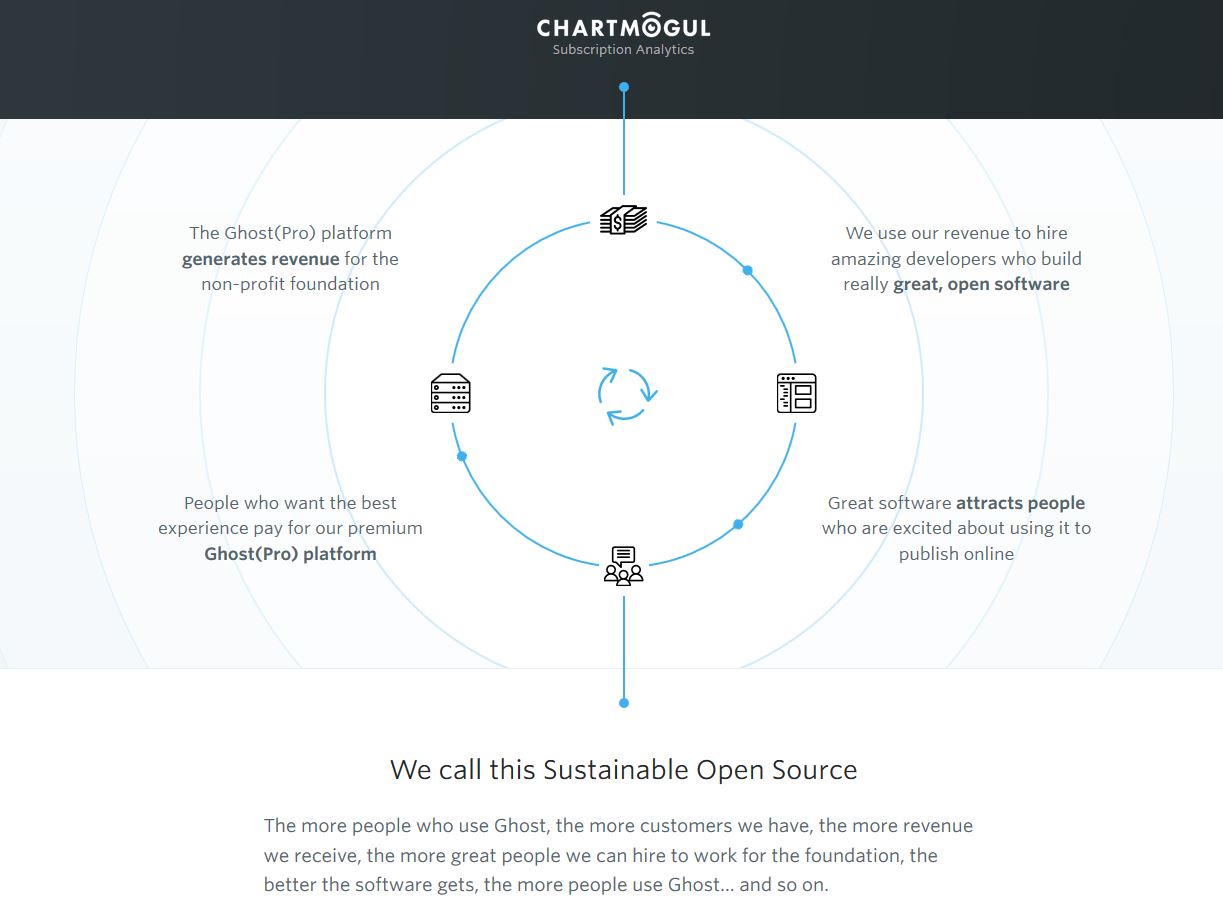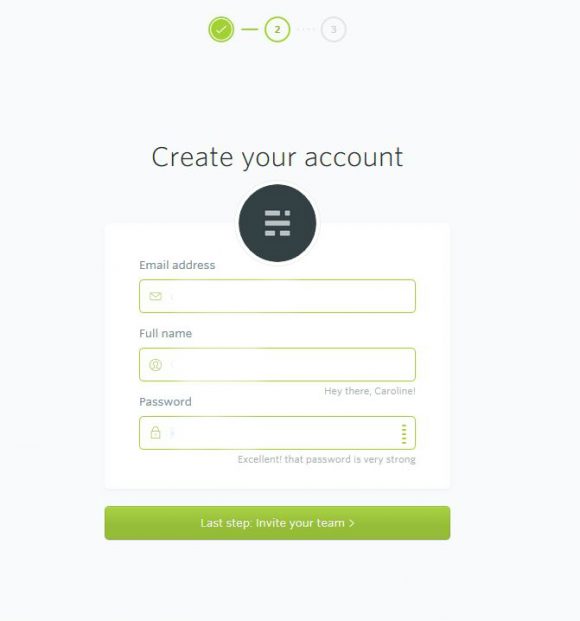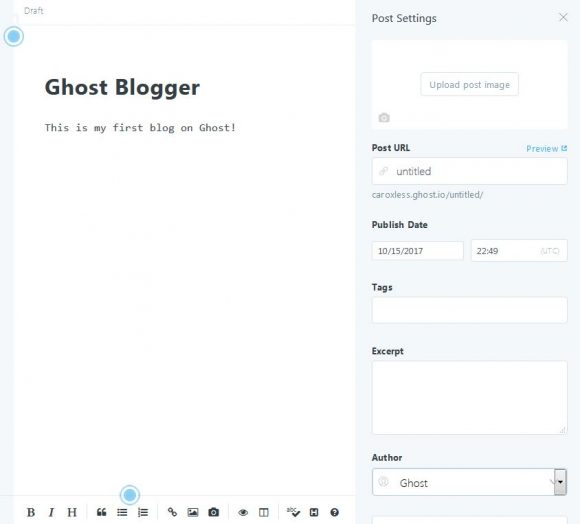How to Get Started With the Ghost Blogging Platform
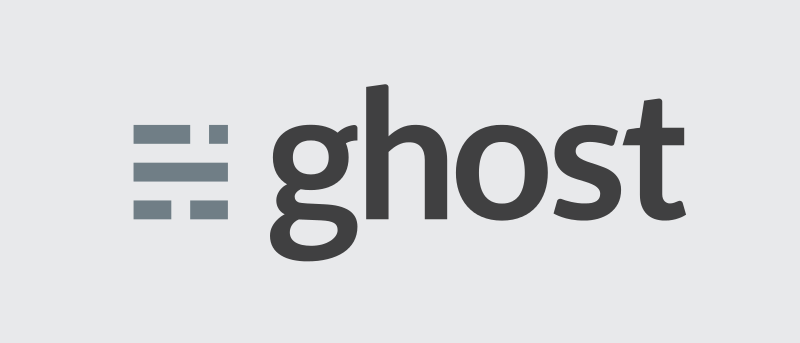
If you’re looking for a new way to publish your content, you might want to consider using Ghost instead of other, more featured blogging platforms. It doesn’t try to be a jack-of-all-trades. Instead it focuses on publishing and displaying content – which offers some benefits for a savvy blogger.
What is Ghost?
The Ghost blogging platform is the brainchild of John O’Nolan. Ghost was first conceived in 2012 in a blog post while O’Nolan was working for WordPress on the User Interface team. He felt WordPress had moved away from its blogging roots to focus more on its functionality as a content management system. Something simpler and more elegant seemed like a solution that was increasingly needed as WordPress became more than just a blogging platform.
To obtain funding, O’Nolan started a Kickstarter campaign in April 2013 that aimed to get about $30,000. He said that amount could get them through the initial development work. It only took 11 hours for the campaign to be fully funded. In less than a month, the Ghost Kickstarter project made more than $260,000.
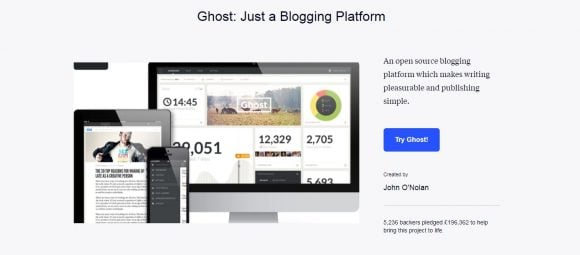
O’Nolan and his team released the first public version of the Ghost in September 2013. The first version was called Kerouac and was only available to those who had backed the Kickstarter.
Less than a month later, the Ghost open source blogging platform was posted on Github for full public download.
Does the Ghost Blogging Platform Cost Money?
Ghost is free if you just want to use the code. If you’re looking for more features like running a live blog, automatic backups, or a host, Ghost Foundation makes these features available for a fee. Ghost Foundation is a nonprofit organization and the money collected is used to continue working on Ghost and other open source software.
Pricing starts with the personal plan at $19 per month for one blog with 50,000 views. The advanced plan is $39 per month for three blogs with 200,000 views. The team plan is $79 per month for up to ten blogs with 500,000 views per month. Ghost Foundation also offers a business plan for $199 per month with annual billing or $269 per month with monthly billing. The business plan supports unlimited blogs, 2,000,000 views per month, an account manager and 99.9 percent uptime.
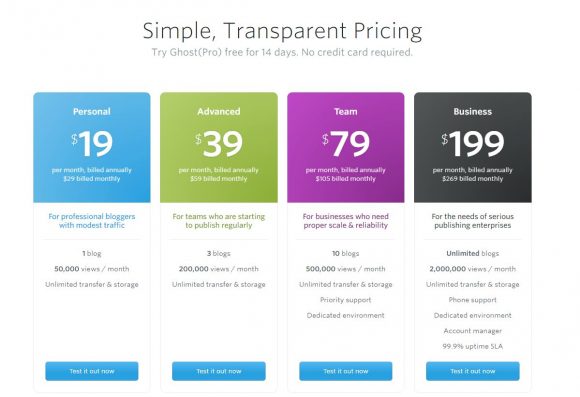
How is the Ghost Blogging Platform Made?
Ghost is built for easy functionality. It’s coded in Node.js. They advertise it as “a fully open source, hackable platform for building and running a modern online publication.” As of October 2017, there have been more than 1,350,000 installs of Ghost.
How Does Ghost Compare to WordPress?
Unlike WordPress, the Ghost open source blogging platform is purely meant for blogging and sharing content. WordPress is designed with many tasks in mind, including functioning as the entire architecture of a website. Ghost is meant for publishing content.
One of the most important differences is that Ghost’s free version is self-hosted. In other words, you download the Ghost open source code from Github, choose a hosting company, register your site, and then use the Ghost blogging platform to start publishing.
However, you can also choose to host your blog through the Ghost Foundation, which offers plans at a variety of different price points. If you choose that option, you get access to their simple publication page where you can quickly and easily start writing posts.
Ghost is made to be simple. Instead of having many complicated options, O’Nolan and his team drilled down to the core concepts behind publishing content. WordPress works for many different people – but it also offers a lot of bells and whistles that aren’t necessary for someone who’s simply blogging.
What Else Does Ghost Have to Offer?
You don’t have to give up your use of third-party services when you use Ghost, either. Things like Disqus and Facebook integration will work with the right themes. It also has social options and SEO features built right into the platform. Ghost claims to have “the best support for search engine optimization and social sharing features of any blogging platform in the world.”
They use:
• Built-in XML sitemaps
• Google AMP pages
• Canonical tags
• Optimized URLs
• Facebook Open Graph tags
• Support for Twitter cards
• Clean semantic makeup
Ghost also claims to set up more easily than WordPress. For full use of WordPress, you have to find a host, set up your account, and upload your files to a new database – before you install the software. Since Ghost has the self-host option, you can just sign in and start writing right away through them if you choose.
Ghost Foundation also says that they’re up to 1900 percent faster than WordPress. Their blogs respond to requests 19 times faster than a WordPress blog, which can help with your user engagement and search engine rankings.
For people who want to create an entire website rather than a publication, however, Ghost Foundation recommends using WordPress instead.
[bctt tweet=”How to Get Started With the Ghost Blogging Platform” username=”blogherald”]How Do I Set Up a Ghost Account?
To set up Ghost, create your user account. Give your email address, name, and password to get started.
Once you’ve signed up, click the verification link in your email. Return to Ghost.
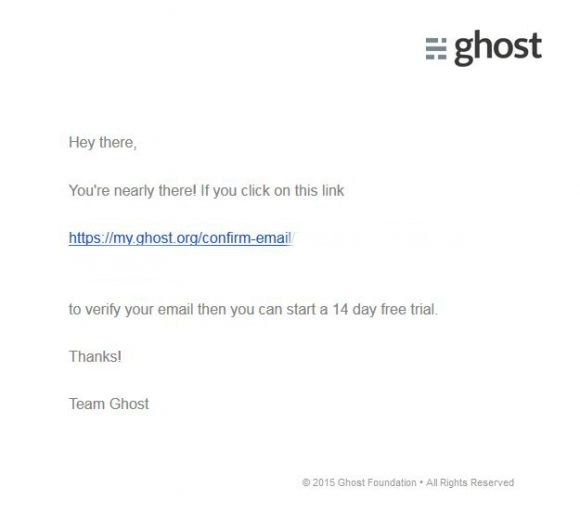
Click “Test It Out” to see your new account. Title your blog as you please – you can always change it later. Click “Start Trial” to get started.
You can choose to invite team members at this point or just start working on your blog.
This, of course, is only if you’re going to use the hosting available directly from the Ghost Foundation. If you’re planning to use your own hosting, things get a little more complicated.
[bctt tweet=”How to publish a post on the Ghost blogging platform” username=”blogherald”]How Do I Publish My First Ghost Blog Post?
It’s really easy to get started with Ghost if you want to dive right in and publish something. Just click “New story” on the sidebar.
Title your blog and start writing in the space below. You have a variety of options on the bottom of the screen to format your words, add links, add images, or check your work. There’s also a button that enables “Hemingway Mode,” which removes your ability to use backspace. When you enable it, it says “Write Now, Edit Later.”
The gear at the top of your post opens more options. You can set your post URL, change your publication date and time, add tags, designate an author, choose an excerpt, or add an image.
When everything is set to your liking, hit “Publish.” You can decide to set your publish to go live immediately or wait until later for it to publish.
Keep in mind that Ghost lets you use basic markdown. Knowing a little bit about it can come in handy for quick formatting and editing.
What is Ghost’s Side-By-Side Preview?
If you want to write in markdown but also see the result of your work, the side-by-side preview is a great asset. Click the icon at the bottom of the page with the square bisected by a line to start the side-by-side preview. You type with markdown on the left and your text appears in its final format on the right.
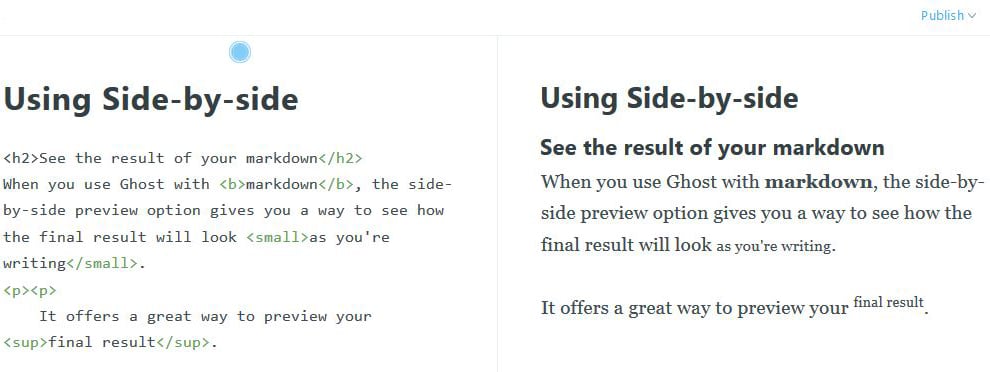
If you’re not experienced with markdown and want to see some quick markdown tips and shortcuts, click on the question mark icon at the bottom of your post. A quick list of frequently used markdown options will appear.
How Do I Add Images to My Ghost Blog?
To upload and display an image on your blog, click the picture icon at the bottom of your draft. Navigate to the folder with your image and then select it and upload it.
You can also add royalty-free images with the Unsplash option. Click the camera icon at the bottom of your draft and a page with many images will be displayed. Choose one and it will be added to your blog, along with the photo credit.
Another option is drag-and-drop. Just grab a picture from your computer and pull the file over your draft. Drop it in and it will appear on your post.
You can also add your image URL in markdown using the code: [Image description](path/to/image).
Keep in mind that posts appear in markdown – not as images. You’ll have to use the side-by-side editor to see how your pictures look in their final format.
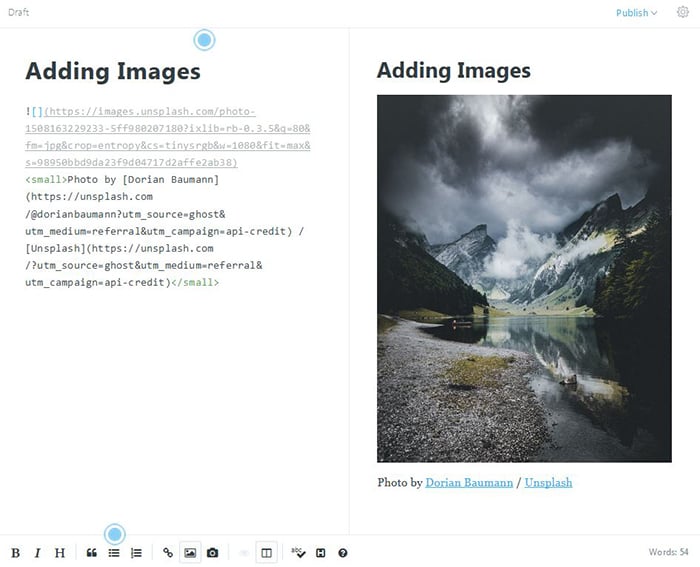
How Do I Add Links to My Posts?
To add a hyperlink to your post, click the link icon to the left of the picture icon at the bottom of the draft screen. The text: [](http://) will appear. Type the anchor text into the brackets and type or paste your complete URL into the parentheses.
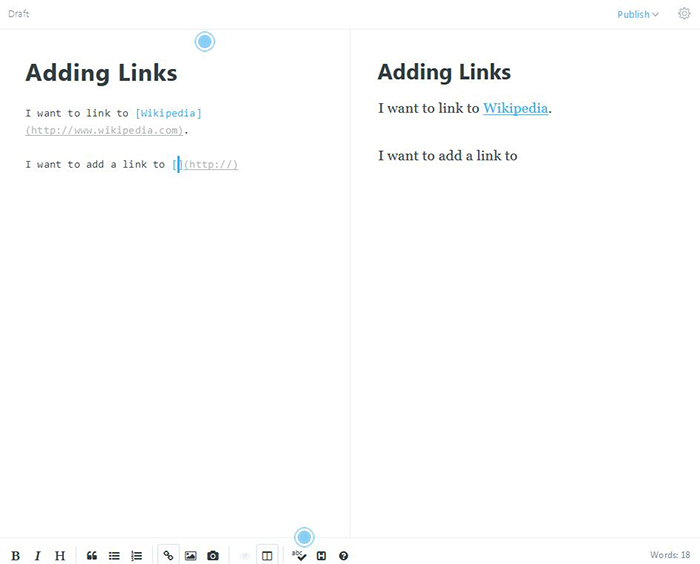
How Do I Adjust My Blog Details?
Click “General” on the sidebar and you’ll see lots of options. For example, you can adjust your title, description, time zone, icon, and logo.
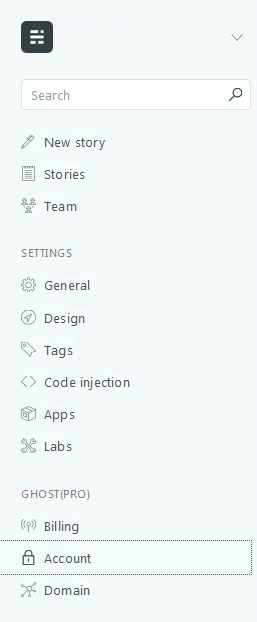
What Themes are Available on Ghost?
There are lots of themes available for Ghost. While you can’t download them directly from Ghost on your user screen, you can find them online, download the file, and upload it directly to your blog.
Ghost Foundation has a marketplace for themes. So do other theme markets that carry WordPress themes. You should browse the themes that are available and find ones that suit the type of publication you’re creating. Consider things like how you want images and videos displayed, whether you want a sidebar, and what kind of colors fit the mood of your work.
You can make themes yourself or find some for free, but many cost money. It’s a one-time payment generally and there’s a wide array of prices.
Once you have a theme, you can upload it from the Ghost dashboard by clicking “Design” and then choosing “Upload a theme.” Drag in the theme zip file you downloaded to change your theme.
Can I Modify Themes?
Inside Ghost, there’s only so much modification that can be done – but there is some. If you want to add code into your blog’s header or footer, you can do it right from your Ghost dashboard. This is useful for things like tracking codes.
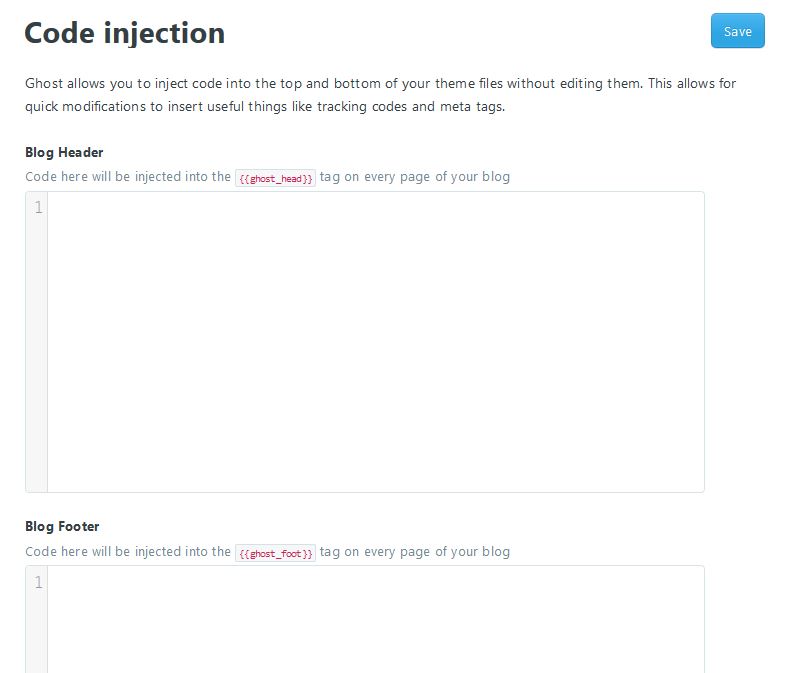
What Do I Need to Run Ghost With My Own Host?
If you want to run Ghost with your own host, Ghost Foundation recommends you use:
• Ubuntu 16.04
• MySQL
• NGINX
• Systemd
• Node v6 installed via NodeSource
• At least 1GB memory
• A non-root user for running Ghost commands
Ghost Foundation also has a guide to help you choose a hosting platform that best meets your needs.
How Do I Get Started With the Ghost Blogging Platform Code?
If you’re interested in downloading the Ghost open source blogging code and using it instead of going through the hosted site, it’s helpful to have some experience with Ubuntu. However, you can also install and run it on Windows.
Ghost Foundation offers a tutorial for those who want to use the code from Github on their website.
You can also follow the instructions available through various hosts, including their recommended host DigitalOcean.
Don’t be overwhelmed by the tutorials. There are also courses that can guide you through the process of learning to manage the Ghost blogging platform. For example, Udemy offers a Complete Beginners Guide to Creating a Ghost Powered Blog that includes video instruction and other resources.
Should I Host My Own Ghost Blog?
Whether or not you should host your own blog using the Ghost open source blogging platform really depends on your comfort level with your host provider. If you’re comfortable installing and modifying Ghost within their platform, that option might be better for you. It certainly offers you a wider variety of hosts – or the ability to host your blog yourself.
Ghost’s recommended servers all have installation guides to help you work through setting it up and publishing. You should feel confident that with a little work, you’ll be able to work through any host.
On the other hand, being hosted through Ghost Foundation is a very simple process. The site design is clean and easy to use, themes are readily available, and you don’t have to know sudo from apt-get to set up your blog. Depending on your needs, Ghost Foundation also offers many forms of support you might not be able to find with hosts less familiar with the code.
If you try one way and don’t enjoy it, you can always try the other way later.
Ghost is a very simple platform to use if you have experience building websites or opt to use one of their pro plans. It has an elegant, focused interface, many lovely themes, and offers a lot of options for a blogger who wants to focus strictly on publication. Even sites like Zappos and Tinder use Ghost architecture. If you’re looking for something that doesn’t have all the bells and whistles of a CMS-heavy platform like WordPress, consider giving Ghost a try.

